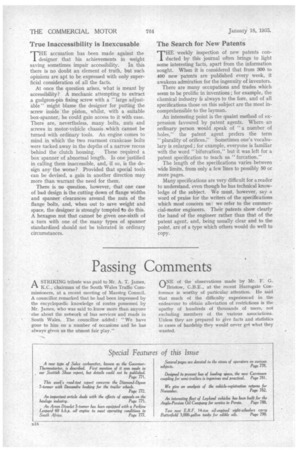True Inaccessibility is Inexcusable
Page 32

If you've noticed an error in this article please click here to report it so we can fix it.
THE accusation has been made against the designer that his achievements in weight saving sometimes impair accessibility. In this there is no doubt an element of truth, but such opinions are apt to be expressed with only superficial consideration of all the facts.
At once the question arises, what is meant by accessibility? A mechanic attempting to extract a gudgeon-pin fixing screw with a "large adjustable" might blame the designer for putting the screw inside 'the piston, whilst, with a suitable box-spanner, he could gain access to it with ease. There are, nevertheless, many bolts, nuts and screws in motor-vehicle chassis .which cannot be turned with ordinary tools. An engine comes to mind in which the two rearmost crankcase bolts were tucked away in the depths of a narrow recess behind the clutch housing. These required a box spanner of abnormal length. Is one justified in calling them inaccessible, and, if so, is the design any the worse? Provided that special tools can be devised, a gain in another direction may more than warrant the need for them.
There is no question, however, that one case of bad design is the cutting down of flange widths and spanner clearances around the nuts of the flange bolts, and, when out to save weight and space, the designer is strongly tempted to do this. A hexagon nut that cannot be given one-sixth of a turn with one of the many types of spanner standardized should not be tolerated in ordinary circumstances.




























































































